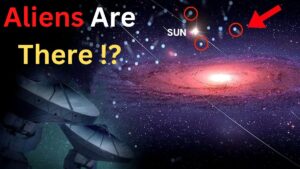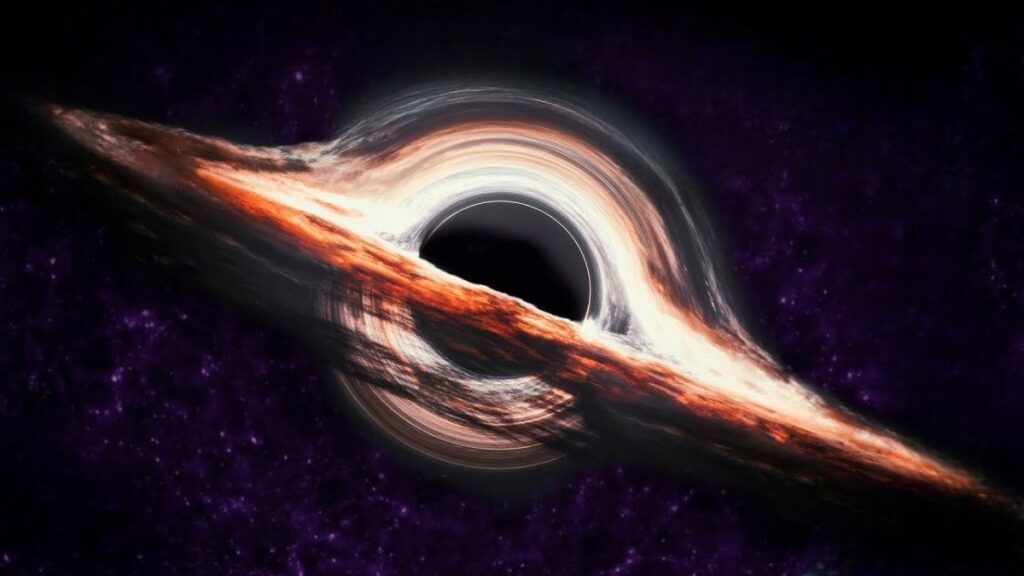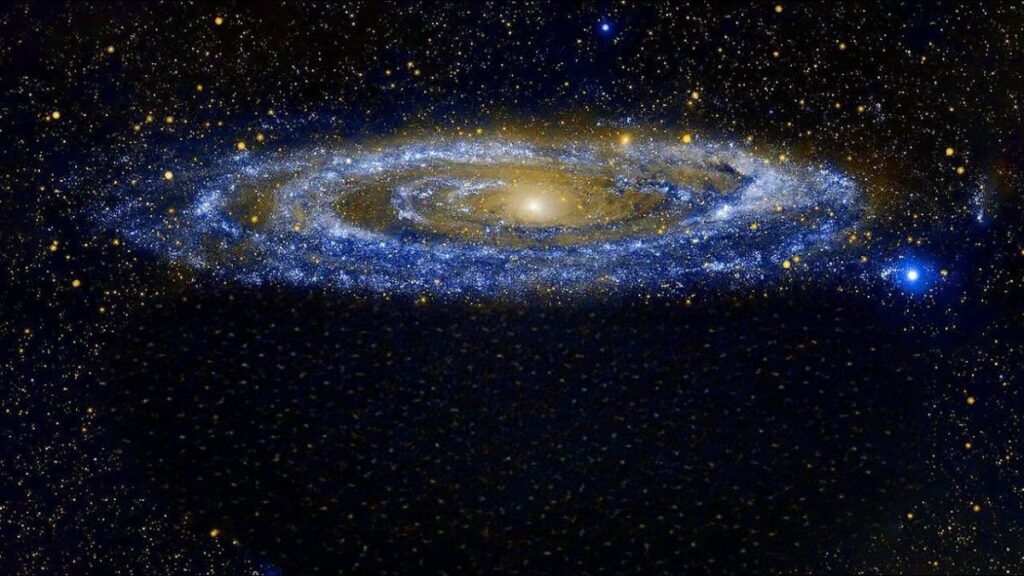
Scientists have recently returned to seriously considering the possibility that we are the only species in the universe. This is because they have been receiving thousands of messages from space from a single enormous and enigmatic source. What is the source of these messages? Is there anyone out there trying to tell us something? Can we ever decipher these messages? We went into great detail in this video about how scientists found a huge object in space that keeps sending us thousands of messages.
A lot of people don’t care about fast audio burst. However, one of the most recent fascinations for astronomers, scientists, and space enthusiasts is the fast radio burst, or FRB. Because not everything about it has been discovered, its mystery is one reason it is so appealing. The excitement grew exponentially when researchers began to detect a number of FRB signals in a short amount of time. Also, the signals will not stop. FRB is one of the deep mysteries in space that could take a very long time to unravel.
In addition, the fact that we are receiving these FRB signals suggests that someone needs our attention. Should we pick up the phone? But exactly what is FRB? Millisecond-long intense bursts of radio emission are known as FRBs. They show the dispersion sweep that radio pulsars are known for. Laura Marenko found and documented the first FRB in 2007. However, based on archive data, researchers discovered that FRBs actually occurred approximately six years prior to a pulsar survey of the Magellanic Clout. FRB is also known as the Lorimer Burst because one of the people who discovered it was named Lorimer.
Dispersion is one of the most important characteristics that scientists look for when capturing an FRB with a telescope. The measure of how stretched out a frb is when it reaches Earth is called dispersion. All light, including radio waves, slows down when plasma is present between galaxies and stars. However, compared to higher frequencies, lower frequencies experience this effect more strongly and slow down more. Frbs are a collection of frequencies. The burst’s higher-frequency light disperses before the lower-frequency light reaches Earth. An attempt is being made by researchers to estimate an frb’s origin distance using this dispersion. The premise is that the signal must have passed through more plasma and the source must be further away the further out an FRB is stretched.
Therefore, allow me to quickly describe the first frb. It was observed across a 288 megahertz radio band and resembled enormous pulses from radio pulsars like the Crab. It was found close to where the Small Magellanic Cloud was. The first frb has been estimated to occur in several hundred bursts, but the scientists were unable to precisely measure the flux due to the instrument’s limited dynamic range.
It was thought to be one-of-a-kind every day, with a small chance of detection, for many years following the first FRB. One of the convincing pieces of evidence for its existence was that it occurred in three of the 13 beams of the Park multi-beam receiver. A Swinburne student by the name of Sarah Berks Bolero, who reanalyzed two other pulsar surveys, published some troubling results a few years later. She was looking for other bursts and found one that was almost exactly like the Lorimer burst’s dispersion.
Radio mission had additional swept sources, but they appeared in all beams. Interest in FRBs had begun to wane at this point. However, fast forward to 2013, and a significant event occurred in the FRB subfield. Four more Lorimer bursts were detected by Thornton and Code. They were officially referred to as fast radio bursts, or FRBs, at this point. The dispersion measures of the FRBs that Thornton and colleagues discovered were significantly higher than those of the initial Lorimer burst. As part of the high time resolution universe surveys carried out at the 64-meter radio telescope at the Park, these four bursts were discovered. The brightest of the bunch had power-law dependencies and a typical dispersion sweep, just like we’d expect from genuine extraterrestrial radio emission sources. In the meantime, in 2014, the first FRB discovered by another observatory was made public.
It was recorded at Arecibo and located in the anti-center of the galaxy. However, the question of where they came from has remained contentious, and scientists are attempting to resolve this conundrum. When scientists looked at a set of data they had in 2019, the mysteries got even more complicated. The investigation, which took place in 2021, revealed that just 47 days were required to produce 1652 flares. The flares, which came from the FRB121102 source, not only set a record for the most flares ever found from an NEFRB, but they also gave researchers a fresh perspective on FRBs. examining or looking for regularity or time intervals between similar bursts.
However, the absence of any evidence of periodicity left the scientists dissatisfied. They voiced their displeasure at the lack of regularity. It made it difficult to identify the source, such as a spinning compact object or a magnetar or dead star with a high magnetic field. However, it was sufficient for the researchers to suggest that multiple mechanisms could produce these FRBs. They also had to accept the possibility that it would take a very long time for us to comprehend FRBs or even decode them if they were secret messages. The majority of FRB sources only flare once, and scientists never hear from them again, despite the lack of periodicity.
Predicting or attempting to locate them has been further complicated by this. However, a few of the FRBs have received numerous signals. FRB121102 is one of the most prevalent ones. Scientists have been able to locate a dwarf galaxy 3 billion light years away thanks to its repetition. However, it is evidently a real oddball. It has a pattern and is extremely active. After 90 days of activity, it goes silent for 67 days. Astronomers have been able to spot FRB121102 emitting due to its level of activity. The 500 meter aperture spherical radio telescope, or FAST, was one of the instruments used to find this particular FRB. Even before it was fully operational, the telescope began detecting FRBs. The aforementioned data were gathered by FAST in just two months over 47 days and 59 and a half hours.
The highest level of activity we have ever observed in a fast radio burst source was 122 bursts per hour, which is the peak rate. The source’s activity could be statistically analyzed thanks to this enormous hall of detections. The bursts were divided into two categories by the researchers, with higher energy bursts and lower energy bursts having distinct properties. It turned out that the weaker ones were more random. However, scientists have attempted to locate the majority of other FRBs despite their lack of periodicity. They discovered that the ones they could trace came from galaxies millions or even billions of light years away. However, despite their distance, they produce bursts of such strength that, in a few milliseconds, they can release the energy of hundreds of millions of our suns. Using the same Fast telescope in China, researchers have recently discovered a second frb, which they have given the name frb190520.
One of the few repeating bursts in this frb is one of its interesting characteristics. In addition, it produces 75 bursts in just six months, making it repeat itself more frequently than the others. The team then conducted additional research on the frb using the New Mexico-based Very Large Array radio telescope.
They were successful in locating the source of the problem. About 3 billion light years from Earth, it came from a small galaxy. The team discovered, among other things, that something from the same location as frb190520 was emitting a persistent radio signal that was much fainter. Only one other frb has a radio signal that stays the same over time out of the more than 800 that have been found thus far. The team was able to ascertain the distance that the dwarf Galaxy from which the frb originated is from Earth. However, the results stopped making sense at that point. Based on the dispersion of the frb, they calculated a distance of 30 billion light years from Earth, which was 10 times greater than the actual 3 billion light years to the Galaxy. This surprised them. That is unusual as well as typical. Only 19 of the 800 frb sources have their origins identified.
For those 19 FRBs, this means that their distance from Earth can be determined, but astronomers must rely solely on dispersion to determine their distance. The estimated distances from the dispersion for the remaining 19 FRBs with known locations are very comparable to the actual distances to their source galaxies. However, the dispersion method’s estimates were incorrect, throwing many assumptions out the window, which makes this new FRB unique. The discovery of FRB190520 prompted additional inquiries that have not yet been answered. For instance, are there more and more persistent radio signals? What factors cause them? Is the persistent radio signal produced by the same phenomenon that produces FRBs?
The fact that the dispersion is higher than it ought to be was another aspect of FRB190520 that perplexed researchers. What could have been the cause? Is the cause connected to the FRB itself or something nearby? The team that found FRB190520 has said they will keep looking at it with a lot of different telescopes all over the world. Scientists might be able to fully comprehend FRBs in the future if additional FRBs are discovered.
Unusual things in the Milky Way: Sagittarius A*, the massive black hole in the center of our galaxy, is also a place where scientists have found evidence of activity. In addition, astronomers have discovered a strange new class of objects close to the black hole. These objects typically have the appearance of being small, but when they are close to the black hole during their orbits, which can last anywhere from 100 to 1,000 years, they expand.
In 2005, an object they identified as G1 was discovered in the galaxy’s core. In 2012, they discovered a second object that they dubbed G2. G2 had been observed close to the black hole by 2014 G2 is thought to have started out as two stars orbiting the black hole together, but they eventually merged into a single giant star and became obscured by a thick cloud of gas and dust.
G3, G4, G5, and G6 were the names given by scientists to four additional objects recently discovered. They orbit differently than G1 and G2, which are similar. The six objects, according to the researchers, are the result of binary stars, or pairs of stars that orbit one another but were forced together by Sagittarius A*’s strong gravity. Additionally, they believe that the universe may experience more frequent star mergers than previously thought. The majority of the stars currently observed may be the result of peaceful mergers, and it is thought that the black hole is the cause of the mergers. It has been confusing how galaxies and black holes interact, which is changing.
Scientists are putting in more effort to learn about this interaction for this reason. G2 is different from the other mysterious objects found close to the Milky Way because it did not undergo as much stretching as the others. G2 must have something keeping it compact and allowing it to survive its encounter with the black hole, according to scientists. The G2 appears to contain a stellar object. Also, the fact that these G objects are close to the Sagittarius A star, which probably ate the gas it ripped off the stars, suggests that they might be feeding the black hole, which is always hungry. It also demonstrates that other galaxies as well as the Milky Way are in total disarray.
We have only been able to map out exoplanets that might support life, but none of them have produced intelligent life. However, when scientists intercepted a signal from Proxima Centauri, the closest star to our solar system, all of that changed. The possibility of extraterrestrial life beyond Earth has been altered by the discovery of this signal. But where and how did this radio signal originate, and what have researchers identified as a potential source? Because it is the Stellar neighbor closest to our sun, Proxima Centauri is by far the most intriguing system being studied by scientists on Earth. It is located just 4.2 light years away. The Centaurus constellation to the south contains this much smaller and dimmer star. Proxima Centauri, discovered in 1915 by Robert Inner, can only be observed through a telescope, just like our solar system. It has a quiet magnitude of just 11.1 and is not visible to the naked eye.
Stellar bodies that orbit Proxima Centauri have been identified as exoplanets. proximus Centauri is a dwarf star with an average density approximately 33 times that of the sun and a mass roughly equal to that of our Sun. This indicates that the star is significantly heavier and has a greater gravitational pull on the Stellar bodies that revolve around it. Even though Proxbear Centauri has a very low luminosity, it is classified as a flare star because it releases solar flares with a lot of radiation at random and quite violently. The two known exoplanets that orbit the dwarf star, Proxima Centauri B and Proxima Centauri D, are affected by these flares. Another candidate exoplanet, Proxima Centauri C, completes one orbit every 5.2 years around 220 million kilometers from the dwarf star. However, the existence of Proxima Centauri D is still hotly debated by astronomers all over the world due to its apparent distance from the Star.
Astronomers and scientists are currently investigating the possibility of the existence of the remaining two planets. At a distance of 7.5 million kilometers, Proxima Centauri B completes a full rotation of the dwarf star in just 11 Earth days. It rotates within the habitable zone of Proxima Centauri and is relatively similar to Earth, with a mass that is only 1.17 times that of Earth. Temperatures in this range are just right for the formation of liquid water on the surface of the exoplanet and atmospheric formation is possible. However, due to the fact that Proxima Centauri is a flare star that randomly emits electromagnetic radiation belts and solar flares, scientists have debated this issue extensively. On its surface, Proxima Centauri B receives approximately 10 to 50 times as much radiation as Earth does.
On Proxima Centauri B, high radiation levels could increase oxygen and carbon monoxide levels, which could build up in the planet’s atmosphere. However, the existence of organic life on the planet may be attributable to the evolution of complex chemicals and organisms as a result of these elevated oxygen levels. Scientists who think that Proxima Centauri B might have an entire atmosphere full of organisms have proposed this idea. They think that this could be the cause and source of the recent signal that came from the region. The possibility that water exists on the exoplanet could also trigger chemical reactions that are favorable to the growth of life and, as a result, cradle some kind of extraterrestrial species. All of these possibilities are still just theories at this point.
However, the planet still possesses some properties that could make it similar to Earth, and it is the only one outside our solar system that is close enough to Earth to be studied for interplanetary travel. It still holds promise for life outside of our solar system, even though any current Rovers or satellites will need thousands of years to reach the planet. However, despite the fact that spacecraft may not reach Proxima Centauri B anytime soon, researchers using telescopes on Earth have recently discovered a signal that could only have come from intelligent life. In April of 2019, a radio signal was found, and it was thought to have come from Proxima Centauri.
The Breakthrough Listen project, which was started to look for intelligent extraterrestrial communication all over the universe, found the signal, which was later given the name Breakthrough Listen Candidate 1 or BLC-1. Over a hundred million dollars have been invested in the project, which has provided thousands of hours of telescope observation time in cutting-edge facilities all over the world. The most comprehensive search for extraterrestrial communication outside of our solar system began in January 2016 and continues today. The CSIRO Parks Radio Telescope in New South Wales, Australia, picked up the signal, also known as the techno signature.
The telescope had previously conducted hundreds of thousands of observations of the region of Proxima Centauri, the star closest to our sun, at the time of the discovery. The telescope collected a lot of data over time, but scientists didn’t immediately recognize the signal. They had to sort through hundreds of thousands, sometimes millions, of signals at the end of each observation cycle to find any unique techno signals that might come from space. Additionally, the signals must have two distinct properties in order to provide you with an idea of what they are seeking. The first was that it had to be limited to a very small range of frequencies, much like how radio works on Earth. This is one of a kind because no natural process can produce this kind of signal, and if it comes from space, it will definitely be suspicious. The second property is that during this particular observation cycle, the frequency of the signal must drift in a manner that is comparable to the motion of exoplanets in relation to Earth.
The team had to get to work removing irrelevant signals from the over 4 million distinct signals that were received by the telescope in Australia. Over 5000 distinct signals were left after the team was successful in removing most of the Earth-based background signals. After further cross-checking these signals with radio transmitters on Earth, the team was left with one unidentified signal. The scientists said that this signal was a one-of-a-kind techno signature with a narrow bandwidth that only showed up when the telescope was pointed at Proxima Centauri and lasted for 30 hours.
Blc-1’s discovery suggested that it might have come from Proxima Centauri and had a distinct feature from the wow signal that was discovered in 1977. Ohio State’s big-ear radio telescope, which was the most important tool in the search for extraterrestrial intelligence, discovered the strong narrowband radio signal known as the “wow signal.” The first indication of extraterrestrial communication outside our solar system was the wow signal, which appeared to originate in Sagittarius. The signal was only present for about 72 seconds, and since then, no other telescope in the world has been able to detect it.
The wow signal’s origins have been the subject of several hypotheses, some of which include human-made sources, but none of them have provided an adequate explanation. It remains the strongest possible evidence for an extraterrestrial civilization outside the solar system that sends radio signals. However, despite the fact that blc-1 possessed characteristics that were analogous to those of the WOW signal, researchers at the Park’s telescope needed to make certain that they had eliminated all other possibilities that might have contributed to the signal’s origin. This was crucial because if no other hypothesis could explain where the signal came from, the only option was to attribute it to extraterrestrial civilizations.
To this end, unquestionably, a remarkable amount of research was conducted to eliminate all conventional explanations for the Signal’s origin. In an effort to replicate the initial observation conditions that led to the discovery of blc-1, the team first began observing Proxima Centauri almost two years after the initial signal was detected. In the Proxima Centauri region, the team has been unable to locate any evidence of a signal that is comparable to blc-1.
The team then looked into the possibility of a moving transmitter, which might have been where the signal came from. This included moving things like balloons, trains, planes, helicopters, and any other electronic device that could send signals far away. The fact that blc-1 appeared continuously over several hours could not be adequately explained by a moving transmitting object, regardless of how plausible this angle of inquiry was. The team concluded that the trajectory that produced The Drift of blc-1 for such a long time could not have been explained by a moving transmitter. The team said in a press release that it is very hard to build a continuous motion path that can keep moving as shown by the measured signal even when the speed changes along the way.
When the team looked into satellites as possible sources of blc-1, they came to a similar conclusion. This is due to the fact that geostationary satellites do not drift at all, whereas satellites in low Earth orbit move too quickly to produce signal drifts for such extended periods. It was determined that no orbiting satellite could have produced blc-1.
The team then looked into whether the signal came from deep space probes like Voyager 1 and 2. The team was also able to rule out the probes because none of them were in line with the telescope or remotely within any region close to Proxima Centauri, making them the only man-made signal transmitting objects in deep space. The team ultimately decided to investigate this signal itself, noticing a Doppler effect-like apparent shift.
This, in turn, suggested that the frequency itself was out of sync with anything that might have been brought on by movement on Proxima b or any planet that orbits Proxima Centauri. The Doppler shift in the signal increased rather than decreased in frequency and had a frequency of 982.002 megahertz. This prompted the team to investigate previously discarded drifting signals in the previous data that were similar to blc-1. They discovered 27 additional mirror signals of blc-1 after looking further and discovering five signals that were similar to blc-1. The origins of the signal became clear at this point. It would appear that the interactions between common clocks and other digital electronic devices produced multiples of the signal frequencies.
Even though it was a rare form, the Park’s telescope was picking up on its own radio frequency interference. The complexity of blc-1 serves as a checklist for future signal discoveries and demonstrates the complexity of the search for extraterrestrial communication in the universe.



![Moon Jellyfish has [ Hidden Secrets ] You don't know moon jellyfish](https://spaceupper.com/wp-content/uploads/2022/11/1-1-300x169.jpg)







